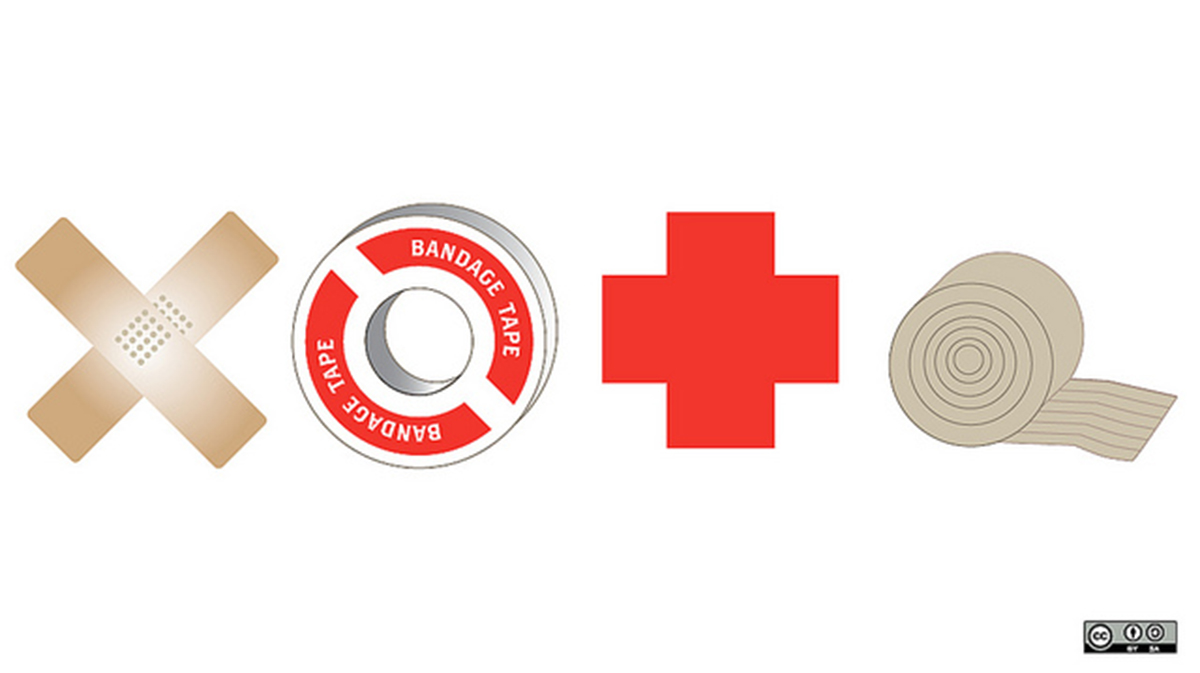Table of Contents
One of the challenges of taking care of wounds that refuse to heal is that it may be necessary to remove old tissue, as often as every day, so new tissue can form. A new "self-adaptive" wound dressing does this without daily wound care.
Stubborn wounds on the feet and legs can take years to heal. While the wound is open, bacteria such as Pseudomonas aeruginosa, Staphylococcus aureus, Proteus mirabilis, or Enterococcus faecalis can grow and, as in my case, infect nearby tissues and even affect the entire body. It's necessary both to cover the wound and to make sure that dead tissue doesn't interfere with circulation and bacteria don't get a chance to grow. That's the purpose of debridement, which is performed before a wound is covered with a dressing.

The tricky thing about bandaging a chronic wound is that the healthy tissue at the edge of the wound has to be left undisturbed, while the dead tissue over the center of the wound has to be removed. Also, the skin needs to be moist, so it remains flexible, but not wet, which would encourage the growth of bacteria. Most wound dressings can accomplish one of these objectives, but not all of them.
A self-adaptive wound dressing such as Enluxtra, made by OSNovative Systems, Inc, in Santa Clara, California is an inovation in wound care designed to meet all of these objectives in a single product.
It has multiple layers that protect the wound from reinfection, wick excess moisture away from the skin, and also removes the icky exudate that accumulates over the surface of a wound. These bandages can be changed every other day by the patient at home, without the need for a visit from a wound care nurse or physical therapist.
How can patients tell if the bandage is working?
- There may be a change in odor. Infected wounds are rotting flesh, and they smell like it. Effective wound care results in cessation of odor. This may take two or three weeks.
- There may be a change in color. Necrotic (dead or dying tissue) tends to be black. If the bandage is working, there won't be as much black tissue around the wound. This may occur in just two or three days.
Products like this are recommended for "larger" wound care. A large chronic wound isn't as large as you might think. Just 20 square centimeters (less than 2 inches by 2 inches) is considered a "large" wound. Many troublesome wounds are just a centimeter (4/10 inch) across.
The tremendous advantage of these products is that they produce results in just two or three weeks, instead of two or three years. An added advantage is that they are products you can use on your own. It isn't necessary to fight your insurance company to get home visits from a wound care specialist. It isn't necessary to go in to see your podiatrist every other day. They are vastly less expensive than podiatrist visits. Don't quit seeing your podiatrist or wound care specialist just because you find a wound dressing that works for you, but be sure to ask about autolytic debridement products if you haven't tried them on your own.
- Alexander M. Reyzelman, DPM
- Mher Vartivarian, DPM. Evidence of Intensive Autolytic Debridement With a Self-adaptive Wound Dressing. Wounds. 2015.27(8):229-235.
- Photo courtesy of stephanie_in_love: https://www.flickr.com/photos/stephanie_in_love/5434424913/
- Photo courtesy of opensourceway: www.flickr.com/photos/opensourceway/5754766455/


Your thoughts on this